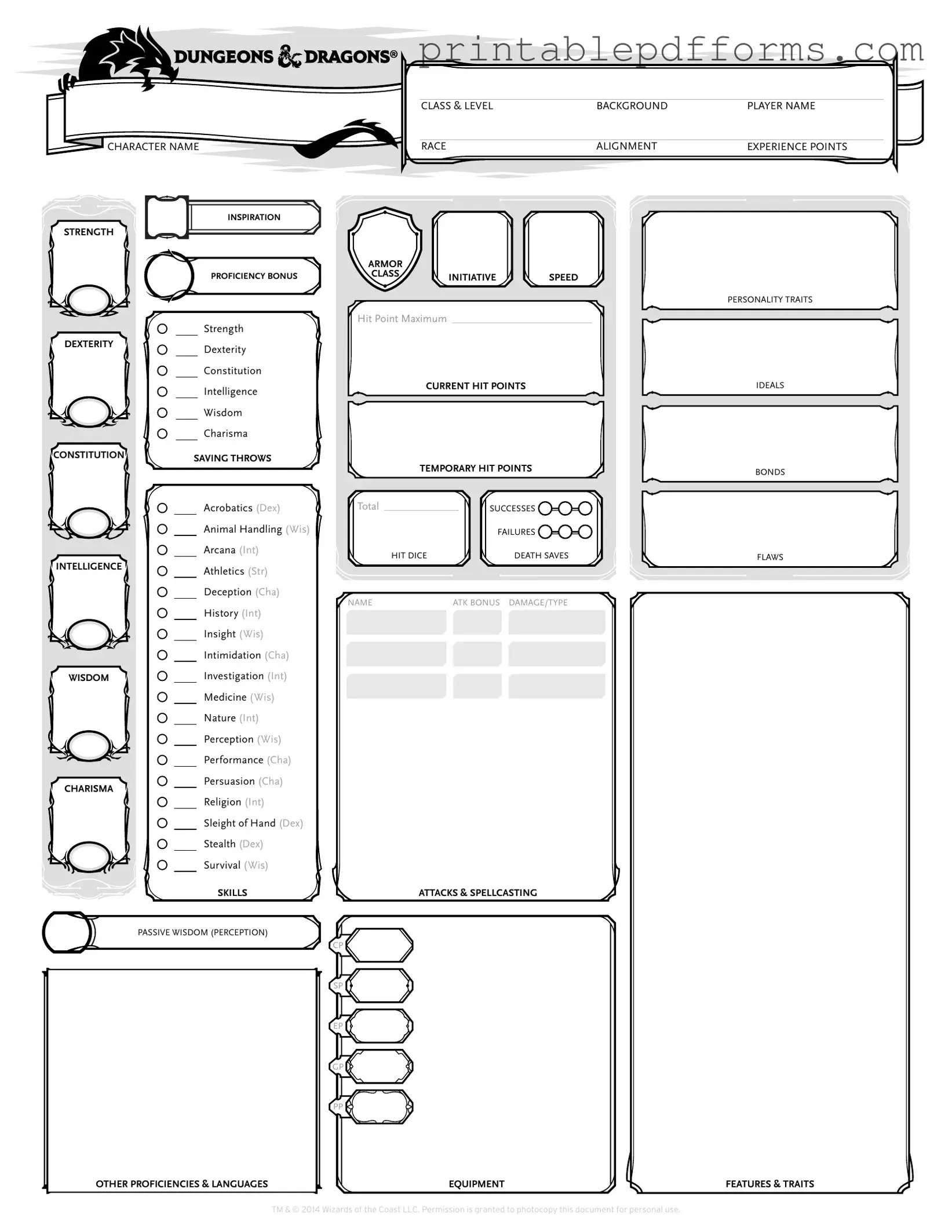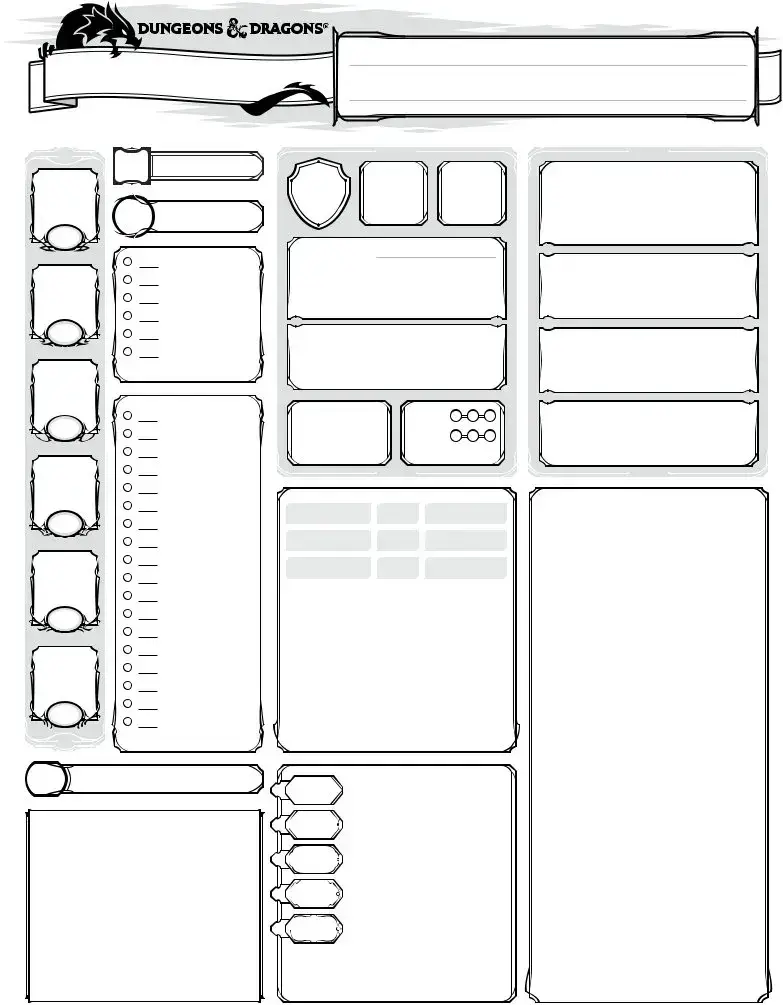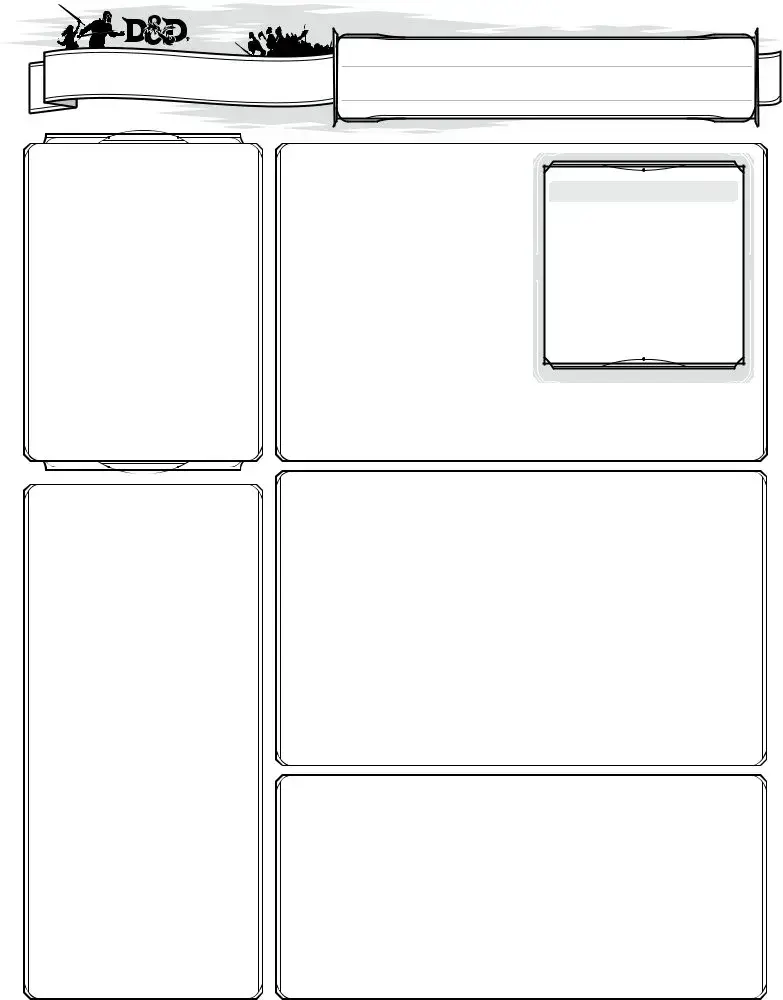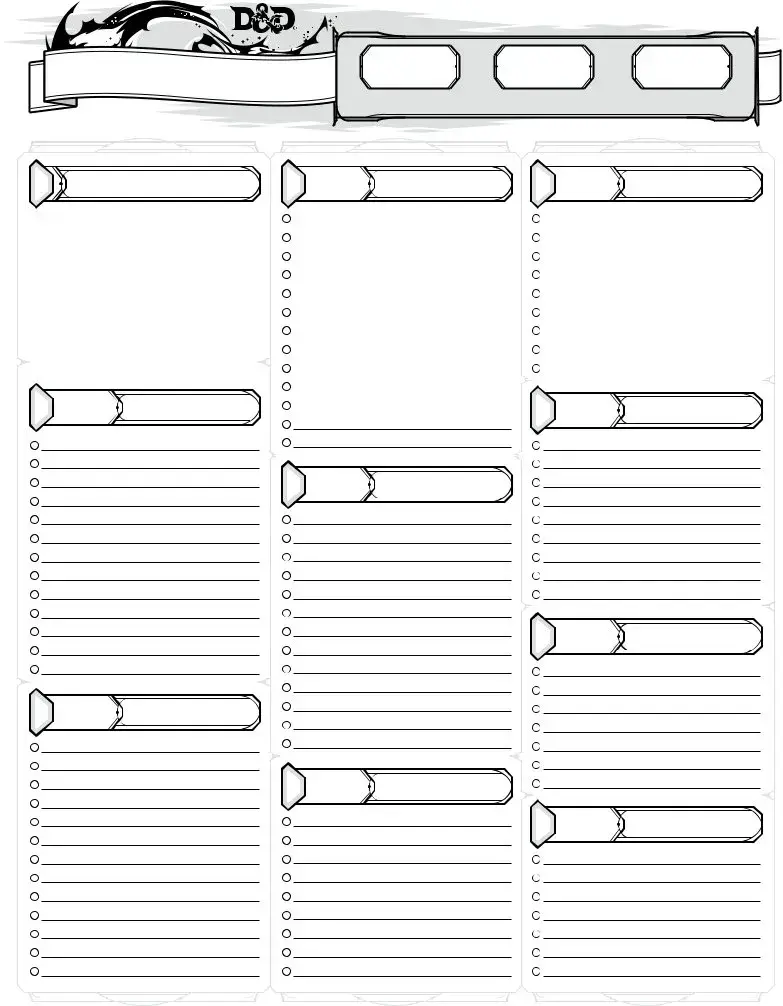What is a DnD Character Sheet?
A DnD Character Sheet is a document that players use to record important information about their character in the game. This includes details such as the character's name, race, class, abilities, skills, equipment, and background. It serves as a reference during gameplay, helping players keep track of their character's progress and abilities.
Why do I need a Character Sheet?
The Character Sheet is essential for a smooth gaming experience. It allows players to easily access their character's stats and abilities, ensuring that they can make informed decisions during their turn. Additionally, it helps in tracking experience points, inventory, and any changes that occur throughout the campaign.
How do I fill out a Character Sheet?
Filling out a Character Sheet involves several steps:
-
Choose your character's race and class.
-
Determine ability scores, which can be rolled or assigned based on the game rules.
-
Record skills, saving throws, and other abilities relevant to your character.
-
List your character's equipment, including weapons and armor.
-
Fill in background information, such as character traits and backstory.
It's important to refer to the Player's Handbook or other resources for specific guidelines related to your chosen race and class.
Can I use a digital version of the Character Sheet?
Yes, many players prefer using digital versions of the Character Sheet. These can often be filled out on a computer or tablet, making it easy to update and save changes. Various websites and apps offer customizable sheets that can enhance your gaming experience.
What should I do if I make a mistake on my Character Sheet?
Making a mistake is common when filling out a Character Sheet. If you notice an error, simply cross it out and write the correct information next to it. If using a digital sheet, you can easily edit the text. Keeping a clean and organized sheet is important, so ensure that any corrections are clear.
How do I track my character's progress?
Tracking progress involves updating your Character Sheet regularly. As your character gains experience points, levels up, or acquires new items, record these changes immediately. Many sheets have dedicated sections for experience and leveling, making it easier to see your character's growth over time.
What if I want to change my character's class or race?
Changing a character's class or race is typically done through a process called "multiclassing," but it may depend on your Dungeon Master's rules. If you wish to make such a change, discuss it with your DM to understand the implications and how it will affect your character's abilities and gameplay.
Are there any resources to help me create a Character Sheet?
Yes, there are numerous resources available to assist you in creating a Character Sheet. Websites like D&D Beyond offer interactive sheets, while the Player's Handbook provides detailed instructions. Additionally, many online forums and communities can offer advice and share templates for you to use.
Can I customize my Character Sheet?
Absolutely! Many players choose to customize their Character Sheets to fit their personal style or to better suit their character's needs. This can include adding artwork, changing layouts, or incorporating additional sections for tracking specific information relevant to your campaign.
While there is a standard format for DnD Character Sheets, you have flexibility in how you present your information. As long as all necessary details are included, you can adapt the layout to suit your preferences. Just ensure that it remains clear and organized for easy reference during gameplay.













